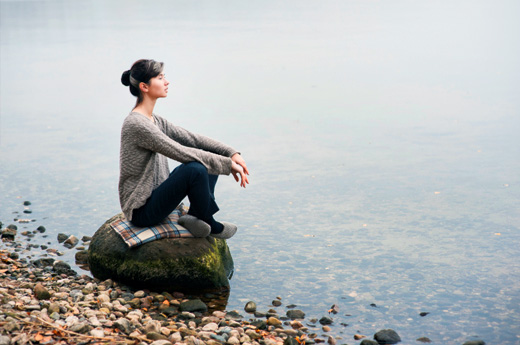
by Holly Walck, devoted Iyengar yoga student and teacher
Planning, shopping, cooking, traveling, and gathering with extended family…the holiday season is upon us—and along with it, a number of challenges to the body, mind, and spirit. The good news is there’s a simple solution: the practice of supported yoga poses that nurture the body, replenish the mind, and restore the spirit.
In restorative yoga, the body is held in a suspended state by props, allowing the poses to be held longer and without muscular effort. This has the effect of increasing the stretch on the muscles, including the diaphragm, and extending or deepening the breath.
Think of the breath as the connector of the brain and the body—the mind and the heart. In his book Light on Life (Rodale, 2005) B.K.S. Iyengar tells us that, “You have to tame your breath to tame your brain.” When the breath deepens and the whole being (body, mind, senses) becomes immersed in the smooth, unruffled flow of the inhalations and exhalations, the doorway to the heart flies open. Then the tranquility contained within that space infuses our every cell, and we can approach our activities in the outer world (like going out on a dark night in holiday traffic for one more roll of wrapping paper in the middle of baking just ONE MORE batch of cookies…grrr!) with peace, joy, and love.
Many blessings for a happy, healthy new year to you all!
Namaskar,
Holly
A Quick and Easy Restorative Yoga Sequence
Note: To make the experience even sweeter, take a therapeutic bath, then massage calming cream all over your body, or dab your favorite essential oil on pulse points before your practice.
Legs up the Wall (Viparita Karani)
Benefit: Relieves achy, tired legs
Sit sideways at the wall, as close to the wall as possible. Turn and swing your legs up the wall, simultaneously bringing the back of your body, from your pelvis to the back of your head, onto the floor. Wrap a yoga strap around the tops of your thighs so your legs can let go of all of the errands they have run completely. Take your arms up overhead and extend them from your armpits to your fingertips, without lifting your shoulders. After a few minutes, rest your arms at your sides and adjust your shoulders so they move away from the back of your head and your shoulder blades so they are tucked up against your back ribs.
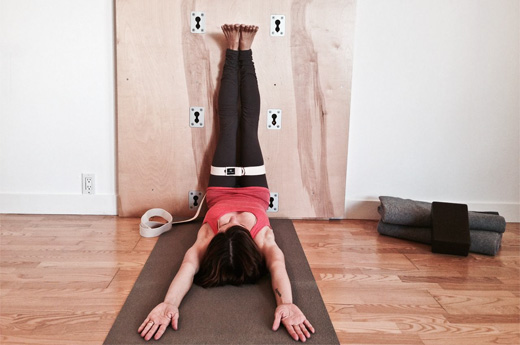
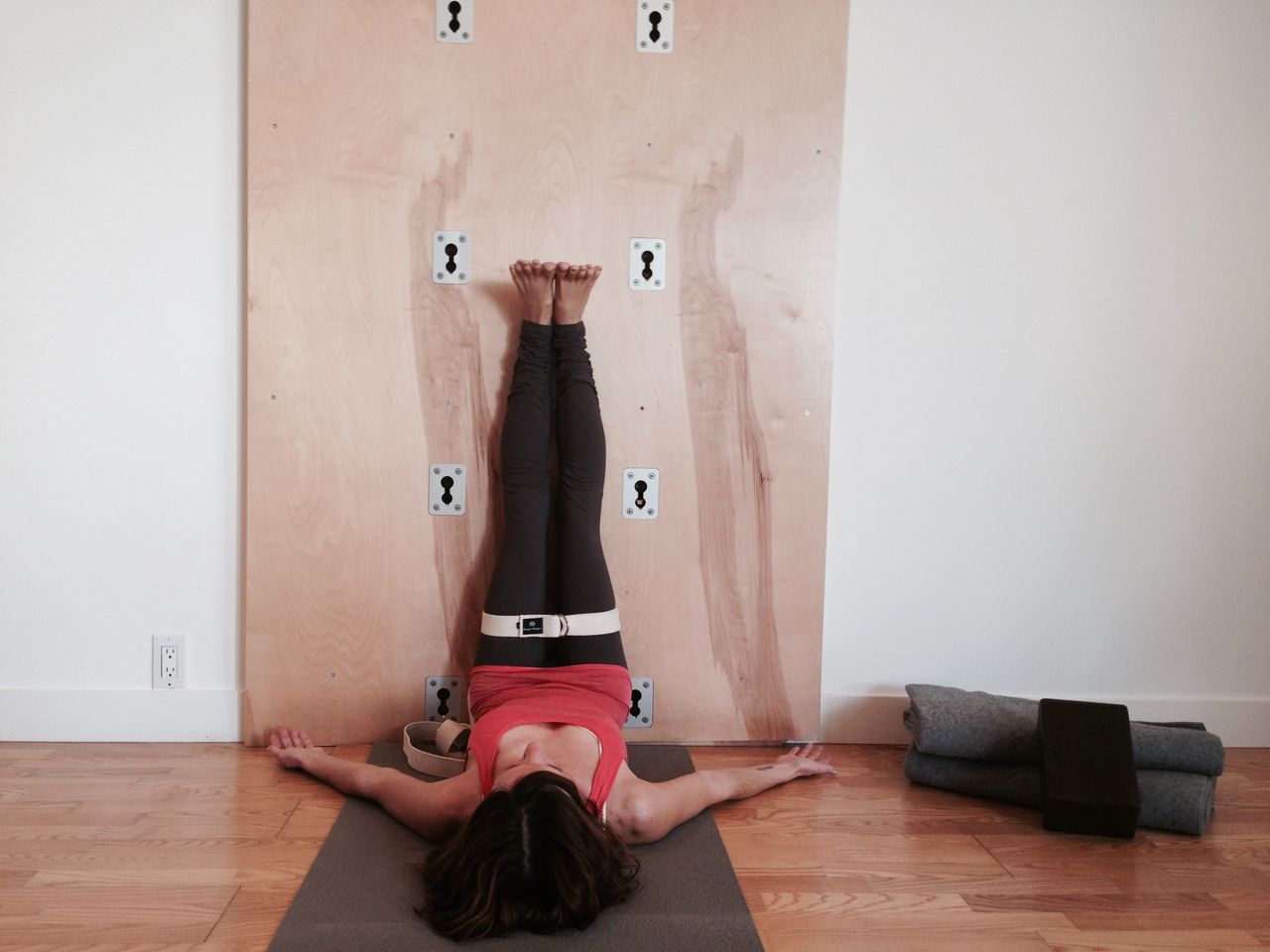 Reclining Bound Angle Pose (Supta Baddha Konasana)
Reclining Bound Angle Pose (Supta Baddha Konasana)
Benefit: Reduces neck and shoulder tension to allow for deeper breathing
Place two folded and stacked blankets horizontally across the center of your yoga mat. Sit forward from the blankets with the soles of your feet together, your knees bent, and your thighs turned out. Lie down so that your upper and middle back and the tips of your shoulder blades are supported on the blankets. Use your hands to move the top of your buttocks away from the blankets. If you experience discomfort in your lower back, hips, or groin in this pose, try supporting each upper thigh with a yoga block.
Take your arms out to the sides and let go of them completely. Use your exhalations to surrender your shoulders from deep behind your ears all the way out through your fingertips.
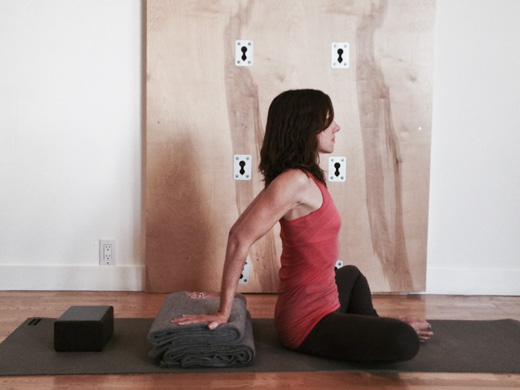
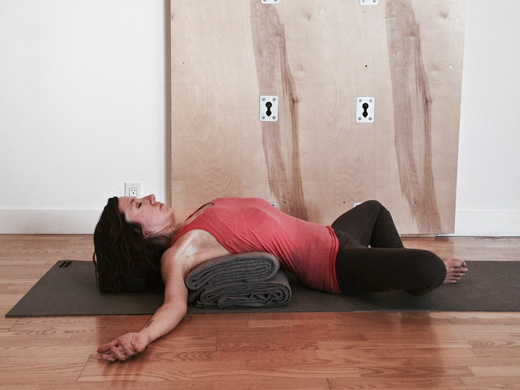 Relaxation Pose (Salamba Savasan)
Relaxation Pose (Salamba Savasan)
Benefit: Relaxes the entire body and helps you find a deep sense of inner peace and quiet
Turn the two folded blankets so they are placed vertically along your mat. Sit a few inches in front of the blankets and lie back evenly. Rest your arms flat on the mat at your sides (a natural 20-degree angle away from your body is ideal). Look to make sure your arms are equidistant from your body, so that you’re balanced. Relax your limbs completely and let your legs and feet drop out to the sides.
Start by exhaling completely, and then slowly inhale, seeing the breath begin at the bottom of your pelvis and travel up towards the top of your chest, touching the inner walls of your torso and spreading them laterally along the way. This time as you exhale, do it more slowly and feel how the blankets beneath you keep your chest open and lifted up away from your thighs.
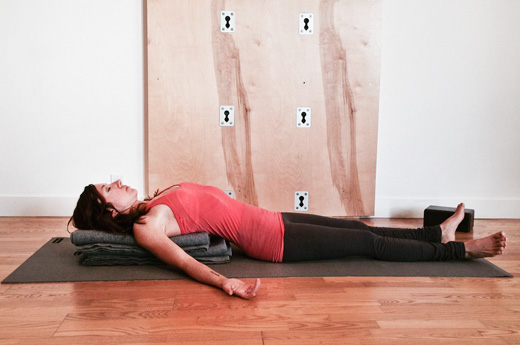
Continue to breathe in this way for 5 to 15 minutes. Allow your eyes to look for your breath, your ears to listen to your breath, your nose to feel your breath, and your skin to receive your breath. (Hint: If your body is fatigued, focus on lengthening your inhalations and, for a brooding mind, focus on lengthening your exhalations.)
 Holly Walck is a devoted student and teacher of Iyengar Yoga. She teaches in Bethlehem, PA and Malibu, CA, sharing with her students how Yoga reveals the infinite source of health and joy within.
Holly Walck is a devoted student and teacher of Iyengar Yoga. She teaches in Bethlehem, PA and Malibu, CA, sharing with her students how Yoga reveals the infinite source of health and joy within.




No comments yet.